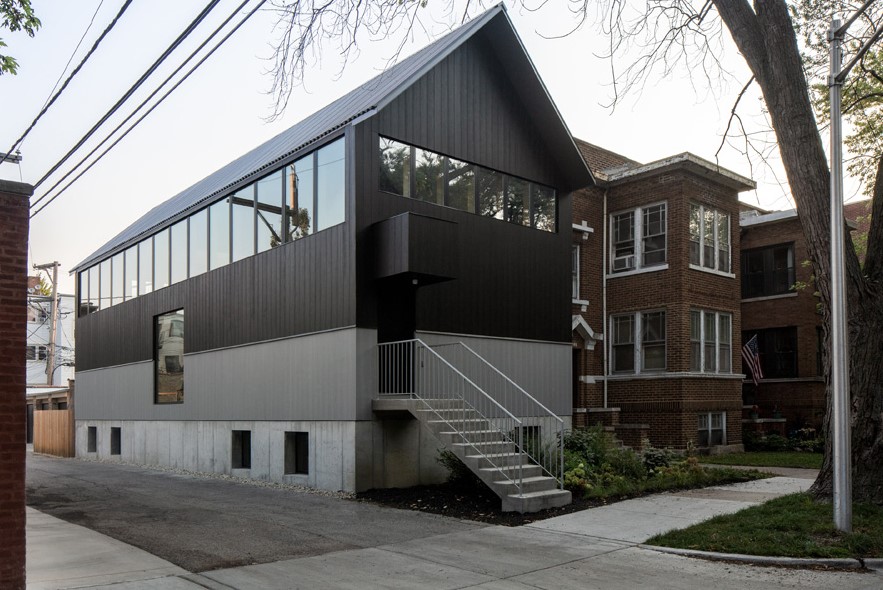The path to Louisville’s Hogan’s Fountain Tee Pee Pavilion is a circuitous one through the city’s original suburban development.
To get there from downtown Louisville, you wind northeast around Eastern Parkway, one of six scenic roads laid out by Frederick Law Olmsted and his sons during a 30-year period at the turn of the 20th century.
You slip across a bohemian Bardstown Road, home to fine restaurants, questionable tattoo parlors and abundant funk. Then you’ll slow down to ease through the entrance to Cherokee Park, past Enid Yandell’s 1906 statue of Daniel Boone, chugging slowly up a tree-lined, one-way loop.
After about a half-mile, a 1905 stone fountain rises into view, its bronze statue of Pan, also by Yandell, front and center. Off to the right rises the 56-foot-high, 56-foot wide Tee Pee, surrounded by playgrounds, basketball courts, parking spaces and restrooms.
The pyramidal structure, built of laminated plywood and shingles over frame, dominates the site. Inside, its knee walls open out to the surrounding trees and landscape. At its center, a series of charcoal grills are clustered in place of its original fire pit. An open chimney looks to the sky above.
What seems a peaceful pavilion lies, in fact, at the heart of a spirited disagreement over how to interpret the future of Cherokee Park.
“It’s misunderstood, as many pieces of modern art are,” says Rachel Kennedy, director of Preservation Kentucky, about the 1965 shelter made of laminated plywood covered in shingles.
“It’s a symbol of the changing, evolving use of the park over time,” says David Vivian, assistant professor of history at the University of Louisville.
“It’s a wonderful, whimsical structure that’s uniquely different,” says Tammy Madigan, a co-chair of the volunteer Save Hogan’s Fountain Pavilion.
“The building is awesome,” agrees Liz Dehart, director of marketing and communications for the Olmsted Parks Conservancy. But she adds: “It would be great in another place in the city, because it is such a cool structure.”
The conservancy’s 2010 master plan calls for its removal. Established in 1989, the group is dedicated to preserving the Olmsteds’ vision for Louisville’s extensive system of parks and parkways. It was formed to respond to developments during the ‘60s and ‘70s, ones the group believes strayed from the landscape architects’ original intent. Among these are the 1965 pavilion and the recreational spaces around it.
But after more than 40 years of family reunions and community gatherings on site, the conservancy has run into stiff resistance from a loyal following. “They think it’s too large for the area – that it’s out of character,” says Madigan, who was married at the pavilion in 2007. “We want to see it stay there forever.”
Toward that end, her group has raised $45,000 toward restoring the Tee Pee’s disintegrating roof shingles. They’ve organized festival booths and donation jars, and even won $10,000 in a Reader’s Digest “We Hear You America” competition. Two Metro City Council members, already supporters of the conservancy, have pledged funds to the project’s restoration.
“I wish they were on our side of the fence,” says DeHart. “They’re really good about promoting.”
Indeed. When the volunteer group moved recently to replace the structure’s shingles, Metro Parks discovered asbestos in its original roof covering, driving its replacement costs up by $25,000. A major fundraiser now is scheduled for August 5, with a goal of raising the additional money by the end of the year. Metro Parks has granted a stay of execution, as it were, until that time.
Still, the path to the Tee Pee’s future seems as circuitous as the route that leads up to it on Bonnycastle Hill. The conservancy soon will launch its own capital campaign for $1.3 million, and then seek a matching sum from the city. Part of the proceeds are aimed at the pavilion’s removal.
Madigan’s group is adamant that the structure should stay put – that if anything, the surrounding recreational facilities should be moved. “It needs to stay,” she says. “It fits where it is.”
Perhaps. In fact, it has evolved to where it is. When the pavilion was built, it was the only structure on site other than Yandell’s Beaux Arts tribute to Pan. Now it’s crowded. The Tee Pee, added 60 years after the fountain, has been muted visually over time, obscured by the landscape and recreational activities that surround it. It lies within an area in need of editing. And the structure deteriorates while its environment erodes.
Whether it stays on site or moves to another, its demolition would be lamentable. This is a one-of-a-kind architectural sculpture, a compelling creation in its own right. But its integrity demands another kind of landscape – one that’s sensitive to its design, and that honors not only the events within it, but also how it frames its environment – and vice versa.
It’s currently embroiled in a hotly-contested, divided controversy, focused on aesthetics versus emotion. The wiser path for all involved, though, might be one that seeks a unified solution instead – one that looks to the question of context, both for the Tee Pee and for Cherokee Park.
The Olmsteds would have expected no less.
For more on the Olmsted Parks Conservancy, go to http://www.olmstedparks.org/
For more on the Hogan’s Fountain Tee Pee Pavilion in Cherokee Park, go to http://www.savehogansfountain.com/history.html
[slideshow id=696]

